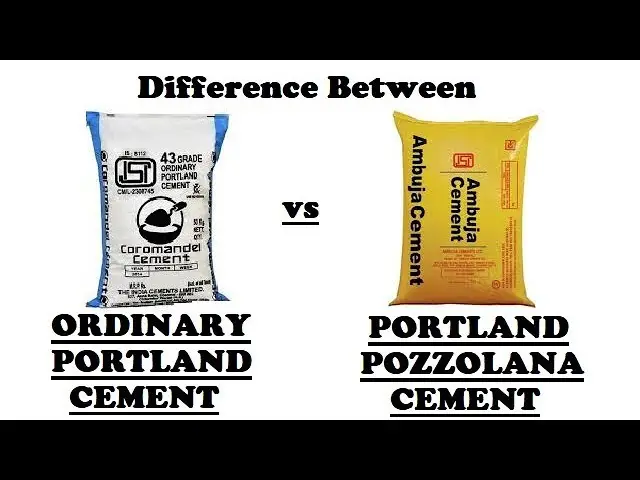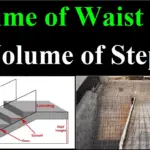OPC (Ordinary Portland Cement) and PPC (Portland Pozzolanic Cement) are two types of cement that are commonly used in the construction industry. Both have their own unique properties and characteristics, and the choice of which one to use will depend on the specific application and the desired outcome.

Ordinary Portland Cement (OPC)
Ordinary Portland Cement (OPC) is made by heating a mixture of limestone and clay to a high temperature, and then grinding the resulting material into a fine powder. The properties of OPC cement include:
High compressive strength: OPC cement has a very high compressive strength, making it ideal for use in structures such as buildings, bridges, and roads.
Setting time: OPC cement has a relatively fast setting time, which means that it can be used in projects that require a quick turnaround.
Durability: OPC cement is durable and can withstand heavy loads, making it suitable for use in structures that need to be able to withstand heavy loads.
Versatility: OPC cement can be used in a wide variety of applications, including for making concrete, mortar, and grout.
Pros
- One of the main advantages of OPC cement is that it has a very high compressive strength, making it ideal for use in structures such as buildings, bridges, and roads.
- It is also relatively inexpensive, which makes it a popular choice for large-scale construction projects.
- OPC cement is also suitable for use in a wide range of environments, including for use in marine and coastal environments.
Cons
- It is not very resistant to chemical attack, making it less suitable for use in environments where there is a risk of exposure to chemicals.
- OPC cement can release a significant amount of CO2 during the manufacturing process, which can contribute to climate change.
Portland Pozzolanic Cement
Portland Pozzolanic Cement (PPC) is a type of cement that is made by mixing Portland cement with a pozzolanic material. Pozzolanic materials, such as fly ash or silica fume, are materials that when mixed with water, will react chemically with the calcium hydroxide that is produced during the cement hydration process.
Also Read: How Many Bags of Cement Are in a Cubic Yard?
The properties of PPC cement include:
Like Us on Facebook!
Lower carbon footprint: PPC cement requires less energy to produce, resulting in a lower carbon footprint than OPC cement.
Subscribe Us on YouTube!
Resistance to chemical attack: PPC cement is more resistant to chemical attack than OPC cement, making it more suitable for use in environments where there is a risk of exposure to chemicals.
High durability: PPC cement has high durability and can withstand heavy loads.
Higher resistance to sulfate attack: PPC cement has higher resistance to sulfate attack than OPC.
Also Read: Can I use CPVC Cement on PVC? (What You Need To Know)
Advantages:
- PPC cement is more eco-friendly than OPC cement, and more resistant to chemical attack.
- PPC cement has higher resistance to sulfate attack which makes it suitable for use in environments where there is a risk of sulfate attack.
Disadvantages:
- PPC cement is more expensive than OPC cement, which can make it less cost-effective for large-scale construction projects.
- PPC cement has a lower compressive strength than OPC cement, which means that it is not as suitable for use in structures that need to be able to withstand heavy loads.
Portland Pozzolanic Cement Vs Ordinary Portland Cement
PPC cement has a number of advantages over OPC cement. One of the main benefits of PPC cement is that it has a lower carbon footprint than OPC cement, as it requires less energy to produce.
PPC cement is more resistant to chemical attack than OPC cement, making it more suitable for use in environments where there is a risk of exposure to chemicals.
Also Read: Can I use CPVC Cement on PVC? (What You Need To Know)
One of the main downsides of PPC cement is that it is more expensive than OPC cement, which can make it less cost-effective for large-scale construction projects.
PPC cement has a lower compressive strength than OPC cement, which means that it is not as suitable for use in structures that need to be able to withstand heavy loads.
| Property | Portland Pozzolanic Cement (PPC) | Ordinary Portland Cement (OPC) |
|---|---|---|
| Composition | Made by mixing Portland cement with pozzolanic material | Made by heating a mixture of limestone and clay |
| Compressive strength | Lower | Higher |
| Setting time | Longer | Shorter |
| Resistance to chemical attack | Higher | Lower |
| Resistance to sulfate attack | Higher | Lower |
| Carbon footprint | Lower | Higher |
| Cost | More Expensive | Less Expensive |
| Applications | Marine works, foundations, retaining walls | Buildings, bridges, roads |
Key takeaways
In conclusion, both OPC and PPC cement have their own unique properties and characteristics, and the choice of which one to use will depend on the specific application and the desired outcome. OPC cement is generally more cost-effective, but PPC cement is more eco-friendly, and more resistant to chemical attack. Ultimately, the choice of which cement to use will depend on the specific needs of the construction project.


















